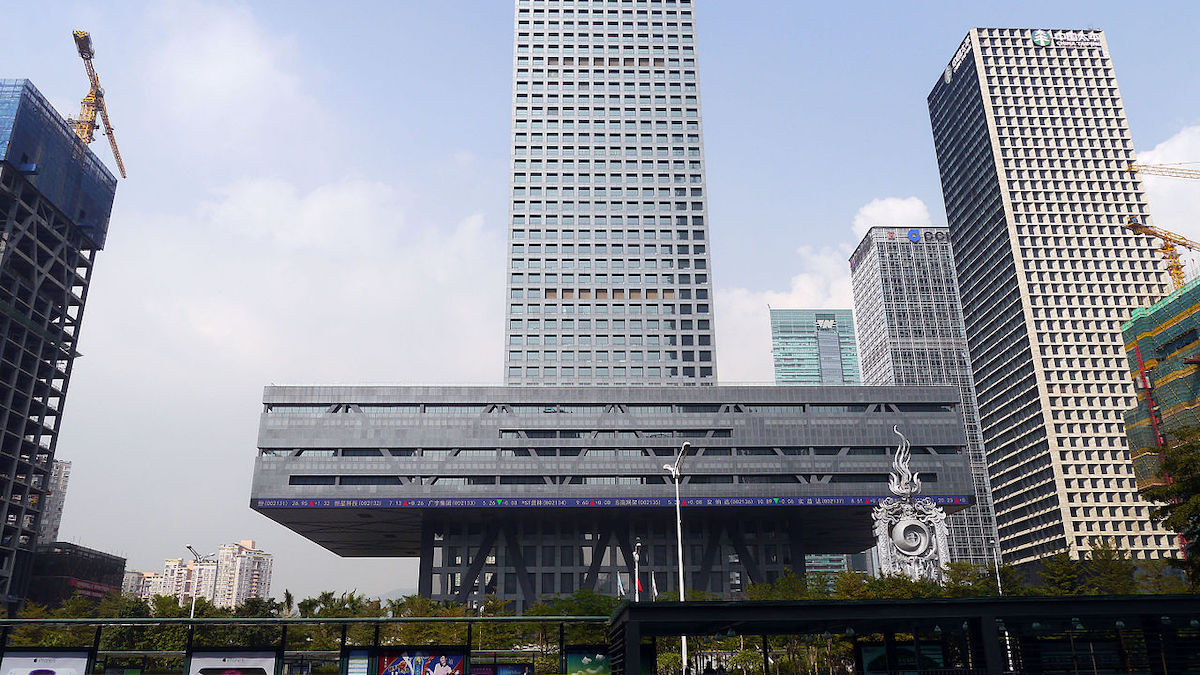(ATF) China’s securities regulator has approved consolidation of the Shenzhen Stock Exchange’s main board and the small and medium-sized enterprise (SME) board in a bid to streamline the bourse’s structure and better serve enterprises’ financing needs.
The SME board was created in 2004 to help smaller companies raise funds after new listings were suspended from the Shenzhen main board in 2000. But the China Securities Regulatory Commission (CSRC) now says the combined new main board will complement the start-up ChiNext board.
As an important step in China’s reforms of capital markets, the merger will “optimise the trading structure of Shenzhen Stock Exchange,” CSRC said in a statement. “The main board and the ChiNext will each have their own focus and complement each other (after the merger) so as to meet the financing needs of enterprises at different stages of development,” the regulator said.
After the merger, the listing rules, investor suitability criteria, trading rules, and stock codes and abbreviations will remain unchanged, CSRC said.
Merging the two boards will give the bourse a simpler structure that is similar as the Shanghai Stock Exchange – with a main board and a start-up board. Shanghai Stock Exchange’s Nasdaq-style start-up board, launched in 2019, is called the Science and Technology Innovation Board (also known as the STAR Market).
LITTLE IMPACT TO MARKET
Shenzhen Stock Exchange expects the merger to have little impact on market operations and investors’ trading in general, a spokesperson with the bourse said in a press briefing.
“The new combined main board will have the same listing rules as the SME board. The only change is that the SME stocks will be categorized as ‘main board A-shares’ after the merger… Companies that have already applied for initial public offerings (IPOs) do not need to submit their application again,” the spokesperson said.
Because the investor suitability criteria of the current main board and the SME board are the same, and the trading rules will remain the same, the bourse expects investors to perceive little difference after the change.
After the merger, the names, abbreviations and constituent description of relevant indexes involving the SME board need to be adjusted accordingly, but there will be no substantial change to the index compiling methods. It would, therefore, not lead to the change of investment targets of funds that track the indexes, the spokesperson said.
Fixed-income products, futures, and options products would be mostly unaffected. The Shenzhen-Hong Kong Stock Connect program would also not be affected, according to the bourse.
The internal technical changes at the Shenzhen Stock Exchange have been completed, and the bourse expects that market players like security brokerages and market intelligence providers to complete their technical changes in two months’ time.
TRANSITIONAL BOARD NOW REDUNDANT
Market observers say the Shenzhen SME board has completed its “mission” as a transitional board to lay the foundation for the ChiNext board, which was launched in 2009.
“The purpose of setting up the SME board in 2004 was to lay the foundation of the ChiNext board,” Jack Zhang, managing director or REAL Capital, said.
“Now that the ChiNext board has been operational for many years and the STAR Market was launched in 2019, the mission of the Shenzhen SME board has been completed,” he added.
Although the SME board was originally established for smaller companies to list, many companies on the SME board, such as electric vehicle maker BYD Company Ltd, video surveillance product manufacturer Hangzhou Hikvision Digital Technology, and premium brewer Jiangsu Yanghe have grown into top-notch companies in their respective industries, and each has over 300 billion yuan ($46.5 billion) of market value.
As of last Friday, the SME board was home to 1,001 companies with a total market capitalisation of 13.7 trillion yuan ($2.1 trillion), while 468 companies traded on the main board and were valued at 9.7 trillion yuan ($1.5 trillion) on aggregate. These companies’ total market value account for about 30% of the entire market.
Last year, the CSRC allowed unprofitable companies to float shares on the ChiNext, matching STAR Market’s overture to pre-revenue science and technology start-ups.
China’s efforts to reform its stock exchanges underline Beijing’s determination to boost funding for innovative technology, and have increased the pressure on bourses in Hong Kong and New York. These exchanges have enjoyed an advantage over Shanghai and Shenzhen, which required companies to meet a stricter regulatory criteria before they could list.
But Chinese companies listed in the US have faced increasing risks after the US passed a bill last year that requires Chinese firms traded on major US exchanges to open up their books and prove they are not under the control of the Chinese government.
Former US president Donald Trump also issued an order that barred US investment in Chinese firms with military ties, and dozens of Chinese companies such as tech giant Huawei, chipmaker SMIC, and smartphone maker Xiaomi have been identified by the US Department of Defense as “Communist Chinese military companies”.
Many Chinese companies looking to go public are considering Hong Kong and the mainland A-share market instead.
























